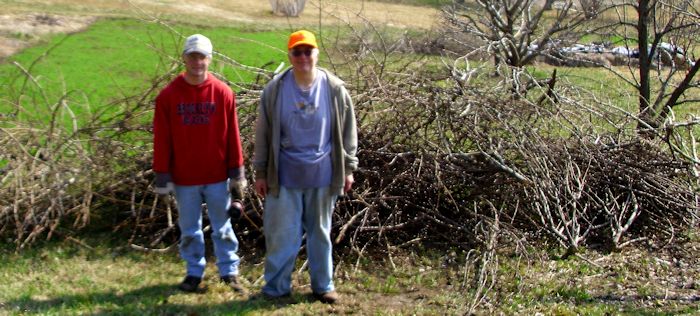Winter weather is anything but predictable. It’s not consistent either. Every year we prepare our property for the worst but sometimes you can barely tell it’s winter! Last year we made sure we got our heating looked at. It’s always best to get everything checked by professionals, so they can spot issues before they’ve even happened. You could get premierhvacservicesllc.com/heating/ to have a look at everything even though you can’t see or hear anything wrong with it. We also got a roofing company in to look at our roof because we didn’t want any leaks happening over the winter and then it only snowed about 4 inches all season.
This doesn’t mean we won’t do the same this year though – if it’s been a while since you had your roof checked out then I recommend hiring a company like Action Roof Repairs & Roof Restorations Canberra so you know whether or not you need to do any repairs before winter. The only true statement you can make is that the weather is interesting. Exciting might work as another term for it. So, I’m not at all surprised that November turned out quite cold with temperatures well below normal, and now December is turning out a bit warm. In fact, we’ve had a number of days that have been above freezing. From a personal perspective, I’m not complaining even a little. My wood pile continues to look nice too. In fact, the house got a bit too warm last night using the minimum amount of wood. I may not even start a fire this evening given that I used one this morning to dry my clothes (hey, driers cost money to operate-clothes racks are pretty much free except for the initial investment).
Just because I personally like the weather though, doesn’t mean there aren’t concerns. When the weather is like this, the ground doesn’t freeze completely. Bugs that are overwintering in the ground and on plants aren’t killed off when the weather is too warm. In fact, I’m thinking if the weather doesn’t get colder soon, I may end up with a bumper crop of tent caterpillars this spring.
Even though people don’t like the cold winds of winter, the plants need it to remain viable. Nature has evolved to require the presence of extreme cold in order to keep insects under control. When the insects aren’t controlled, the plants have a hard time surviving (normally it’s the plants you want most that die the easiest). For example, tent caterpillars can easily strip my plum trees and because the trees don’t get a second set of leaves, the trees are bald for the entire summer (resulting in their death).
Unfortunately, the weather can also get too cold. Last winter we experienced day after day of colder than usual temperatures. The result was that about half of my grape vines died. Interestingly enough, the grape roots survived and new vines came up from the root. I’ll still have to wait for three or four years to get my first batch of grapes from the new vines, but it won’t be as long as if I had to replant them using new plants. The point is that there is a range of temperatures that plants expect during the winter months and when those temperatures aren’t met, the plants die or the insects overwhelm them.
A number of people have asked where global warming is given the temperatures we’ve been having for the most part. Global warming is a technically correct, but misleading term. The more I read, the more I come to understand that the overall warming of the earth’s temperature causes wider variations in climate, not necessarily overall warming. While we have experienced colder weather here in Wisconsin, overall, the earth has continued to warm. I was reading about the effects of the warming in other areas of the world just this morning.
I’ll eventually provide some additional input regarding global warming because there seems to be a great deal of confusion about things. I do believe there is some level of global warming based on the weather I’ve seen personally. Whether global warming is due to natural climatic variations or the result of mankind’s mistreatment of the planet remains to be seen (although, fouling the planet’s atmosphere, water, and soil is a bad idea no matter what the effect might be). No matter the cause, I look for the effects to become more prominent in the future. Let me know your thoughts about our interesting winter weather at [email protected].

